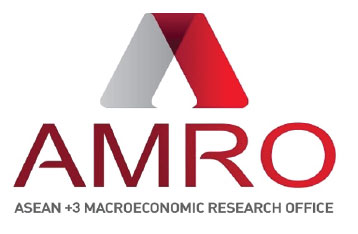Global and regional financial safety nets play a crucial role in maintaining economic stability, especially during crises. They provide essential financial support to countries facing balance-of-payments difficulties and help prevent localized shocks from escalating into regional or global crises.
In recent years, the global economy—including the ASEAN+3 region—has faced growing risks, from extreme weather events to unprecedented challenges such as the COVID-19 pandemic. Countries worldwide, including in the ASEAN+3 region, have stepped up efforts to address these risks, demonstrating their commitment to resilience in an uncertain world.
Global and regional efforts to strengthen financial resilience
At the global level, institutions such as the International Monetary Fund (IMF) have stepped up their support to help countries navigate economic and financial crises through measures such as emergency assistance schemes, debt relief, and Special Drawing Rights (SDRs) allocations. Meanwhile, Regional Financial Arrangements (RFAs) have been augmenting their tools or introducing new instruments to address emerging challenges.
For ASEAN+3, this spirit of collaboration is reflected in the continuous enhancement of the Chiang Mai Initiative Multilateralisation (CMIM). As a cornerstone of the region’s financial safety net, CMIM provides a vital framework for cooperation among the 10 ASEAN member countries and their Plus Three partners—China (including Hong Kong), Japan, and Korea.
Lessons from past crises
The drive to strengthen regional financial cooperation is rooted in hard-earned lessons from past crises. The 1997-1998 Asian Financial Crisis exposed the vulnerability of individual economies to speculative attacks and capital outflows, highlighting the need for a robust regional mechanism to provide financial support during crises.
In response, the ASEAN+3 members introduced the Chiang Mai Initiative (CMI) in 2000, initially as a set of bilateral currency swap arrangements. Recognizing the need for a more multilateral approach, the initiative evolved into the CMIM in 2010, with an initial pool of US$120 billion dedicated to supporting member economies facing short-term balance-of-payments challenges. Today, this firepower has doubled to US$240 billion. Additionally, the CMIM Precautionary Line (PL) was introduced to further strengthen financial defences.
Recent enhancements to CMIM
To ensure that the CMIM remains an effective crisis response tool, ASEAN+3 has introduced key improvements to address vulnerabilities and enhance regional financial stability in a timelier and more flexible manner. Two recent developments stand out:
1. Introduction of the CMIM Rapid Financing Facility (RFF)
A major milestone in regional financial cooperation, the CMIM-RFF is designed to provide swift financial assistance to economies facing urgent balance-of-payments needs. This ensures that members can respond more quickly and effectively to crises, minimizing economic disruptions.
2. Renewed Usage of the CMIM PL
The ASEAN+3 members have also agreed to the possible renewal of the drawings from the CMIM PL, further enhancing the CMIM’s flexibility and reinforcing the region’s recognition of the importance of preventive measures in mitigating potential financial risks. By enabling members to access sufficient precautionary funds, the CMIM provides an additional layer of security for its members.
Making CMIM more attractive and effective
Alongside the establishment of the RFF and the renewal option for the CMIM PL, ASEAN+3 members are actively working on further improvements to make the CMIM more effective and appealing. These ongoing efforts reflect a strong commitment to refine the CMIM to better serve its members and reinforce its role within the global financial safety net.
One key area of potential reform is introducing greater flexibility to the Purchasing Multiples under the existing CMIM framework. Currently, these multiples determine the maximum financial arrangement available to each ASEAN+3 member. To ensure that members receive sufficient support during crises, more flexibility regarding the size of financial support is being considered to improve the attractiveness and effectiveness of CMIM facilities.
Discussions are also underway on increasing the IMF De-linked Portion (IDLP), which would allow members to access CMIM funds more quickly and independently, even without an IMF program.
Finally, ASEAN+3 is studying the feasibility of transitioning to a more robust financial structure which strengthens its RFA’s financial capacity and credibility, aligning it more closely with other global financial safety net mechanisms.
A stronger future through regional cooperation
These recent developments reflect ASEAN+3’s strong commitment to financial cooperation and to safeguarding regional stability. By continuously adapting and improving its RFA, the region is not only preparing for current challenges, but also laying the foundation for a more resilient future in tandem with global initiatives.
As global uncertainties grow, regional unity and collaboration will be key to navigating the challenges ahead. The enhanced CMIM stands as a testament to ASEAN+3’s determination to safeguard economic stability, foster growth, and ensure shared prosperity.
